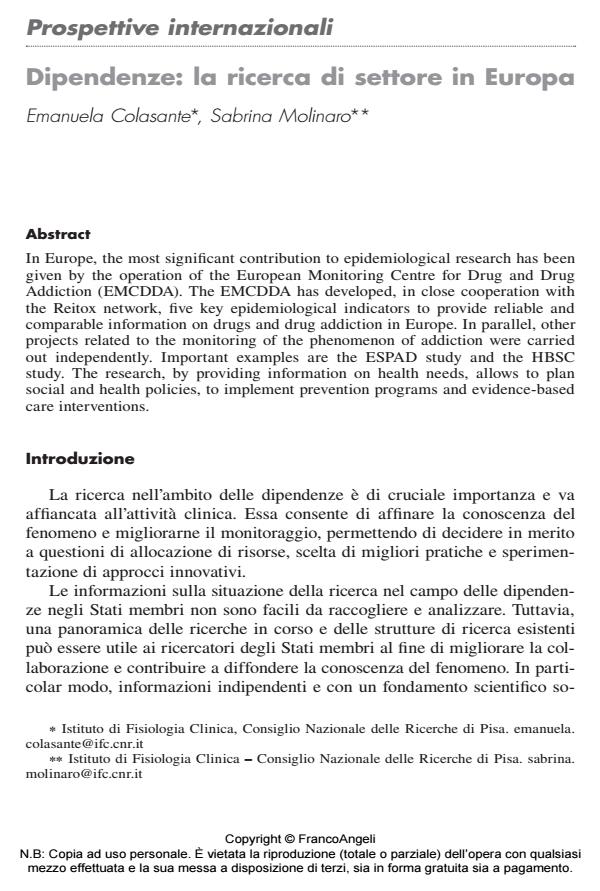Dipendenze: la ricerca di settore in Europa
Journal title SICUREZZA E SCIENZE SOCIALI
Author/s Emanuela Colasante, Sabrina Molinaro
Publishing Year 2014 Issue 2014/3
Language Italian Pages 15 P. 167-181 File size 120 KB
DOI 10.3280/SISS2014-003013
DOI is like a bar code for intellectual property: to have more infomation
click here
Below, you can see the article first page
If you want to buy this article in PDF format, you can do it, following the instructions to buy download credits

FrancoAngeli is member of Publishers International Linking Association, Inc (PILA), a not-for-profit association which run the CrossRef service enabling links to and from online scholarly content.
In Europe, the most significant contribution to epidemiological research has been given by the operation of the European Monitoring Centre for Drug and Drug Addiction (EMCDDA). The EMCDDA has developed, in close cooperation with the Reitox network, five key epidemiological indicators to provide reliable and comparable information on drugs and drug addiction in Europe. In parallel, other projects related to the monitoring of the phenomenon of addiction were carried out independently. Important examples are the ESPAD study and the HBSC study. The research, by providing information on health needs, allows to plan social and health policies, to implement prevention programs and evidence-based care interventions.
Emanuela Colasante, Sabrina Molinaro, Dipendenze: la ricerca di settore in Europa in "SICUREZZA E SCIENZE SOCIALI" 3/2014, pp 167-181, DOI: 10.3280/SISS2014-003013